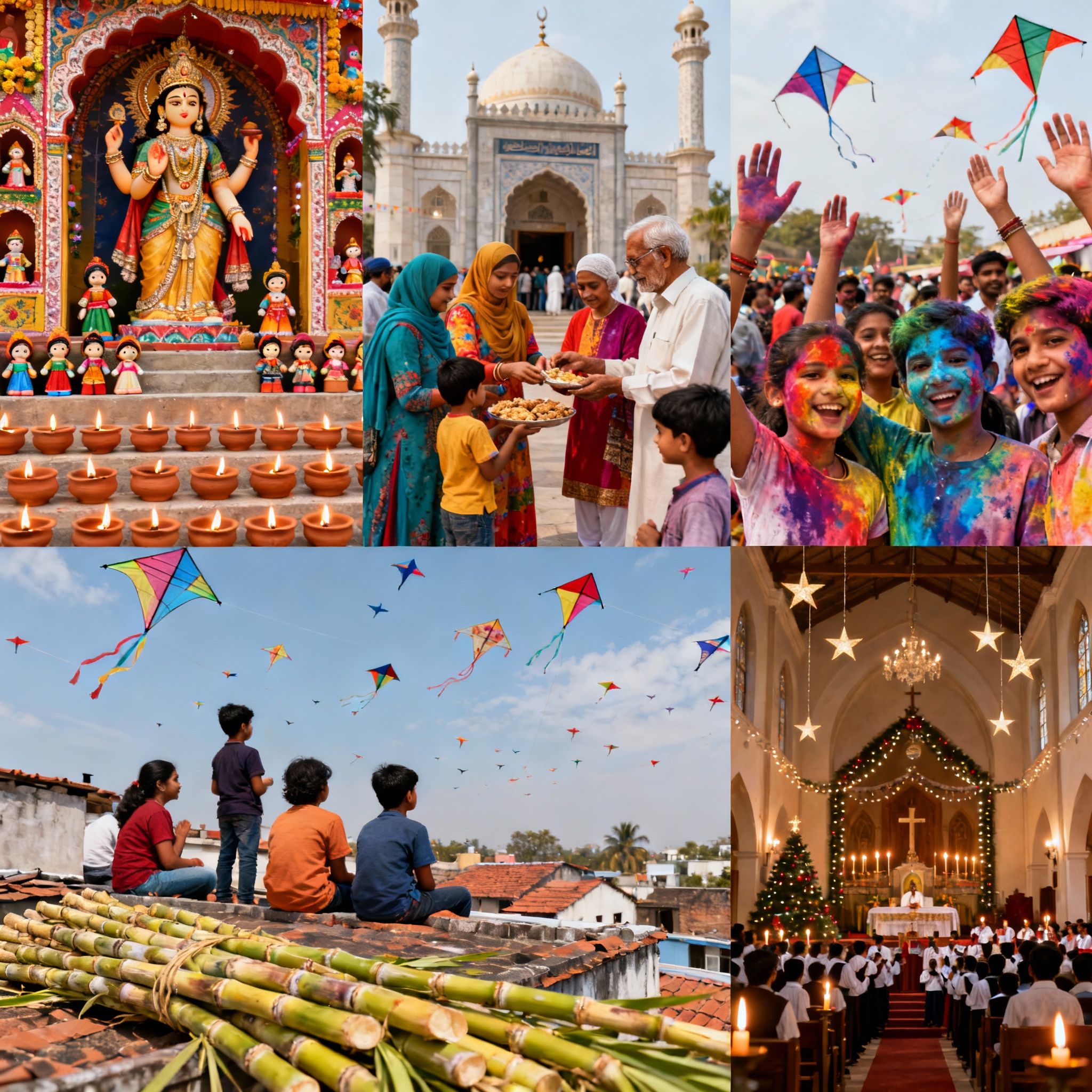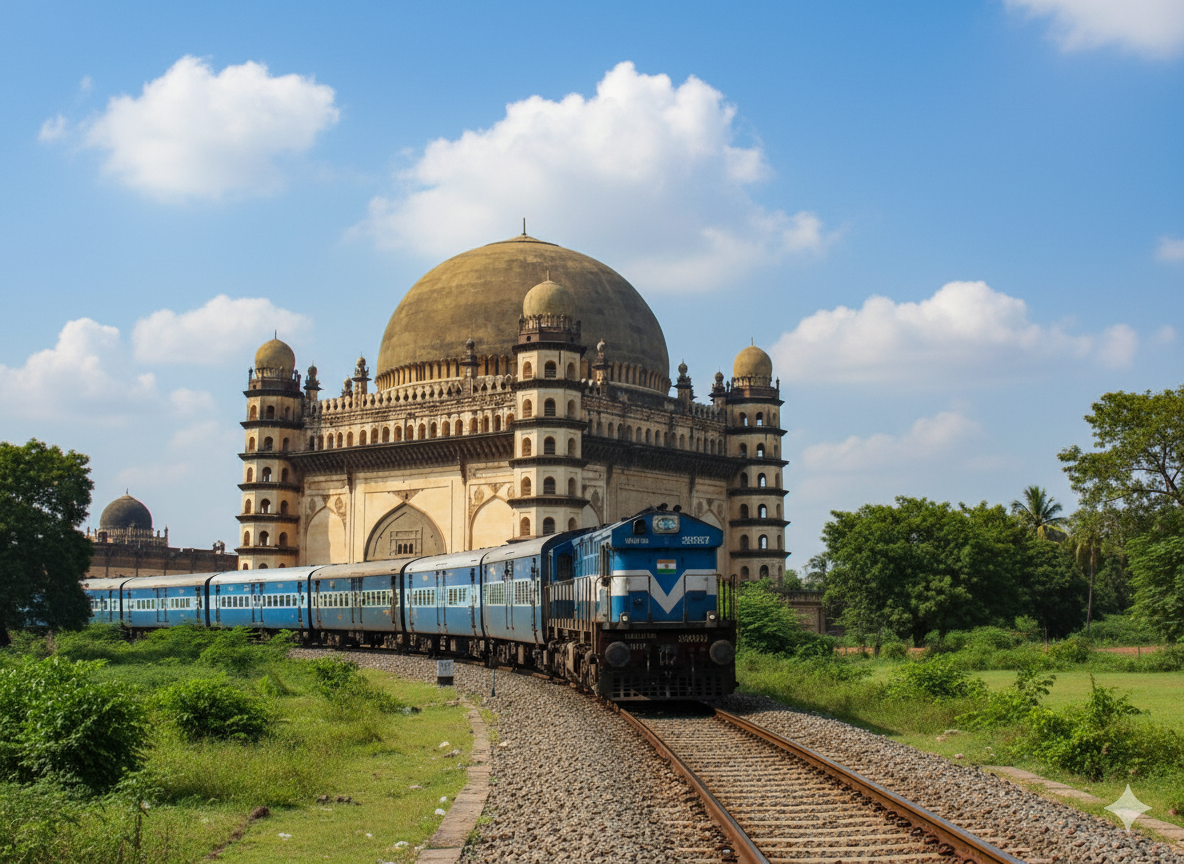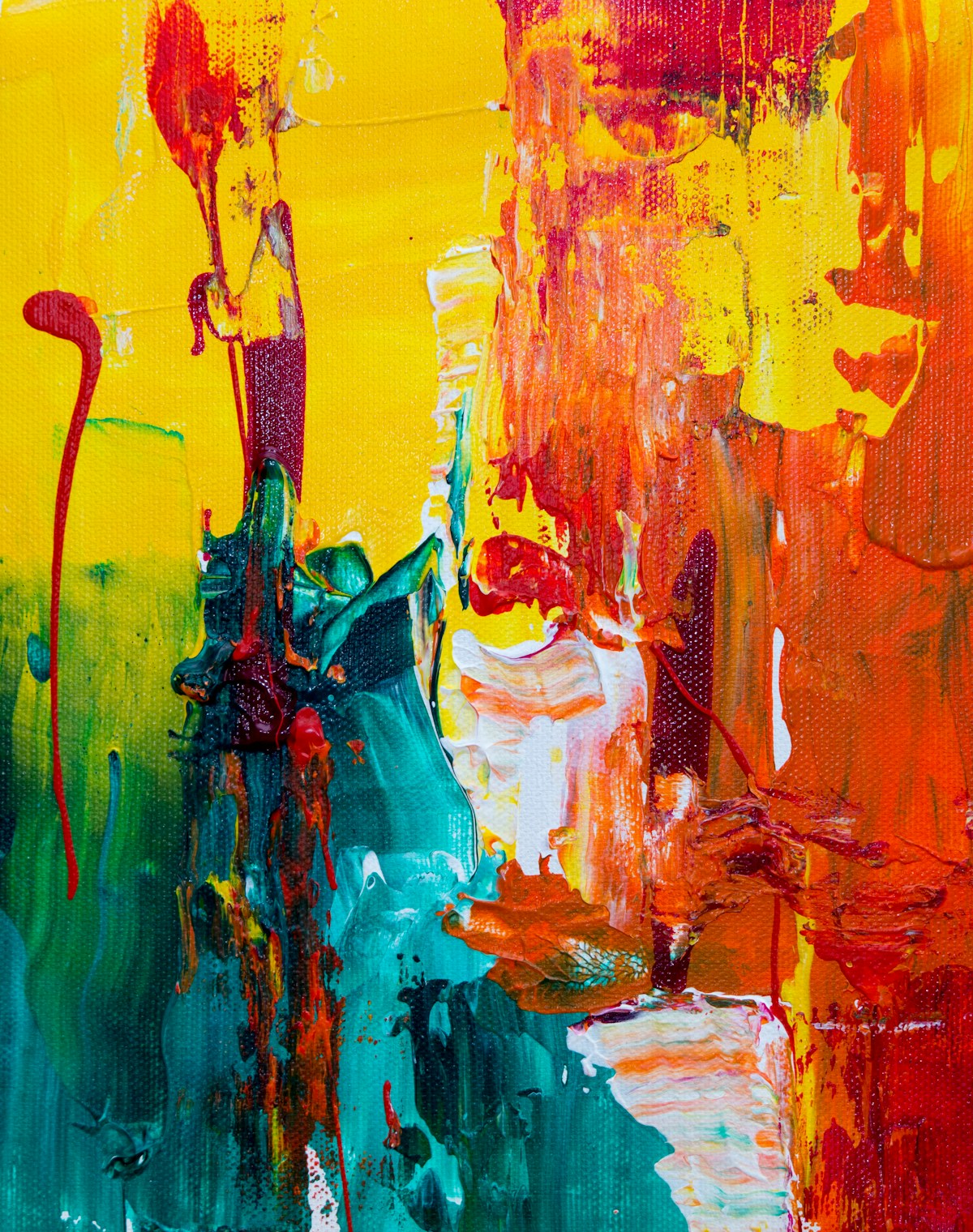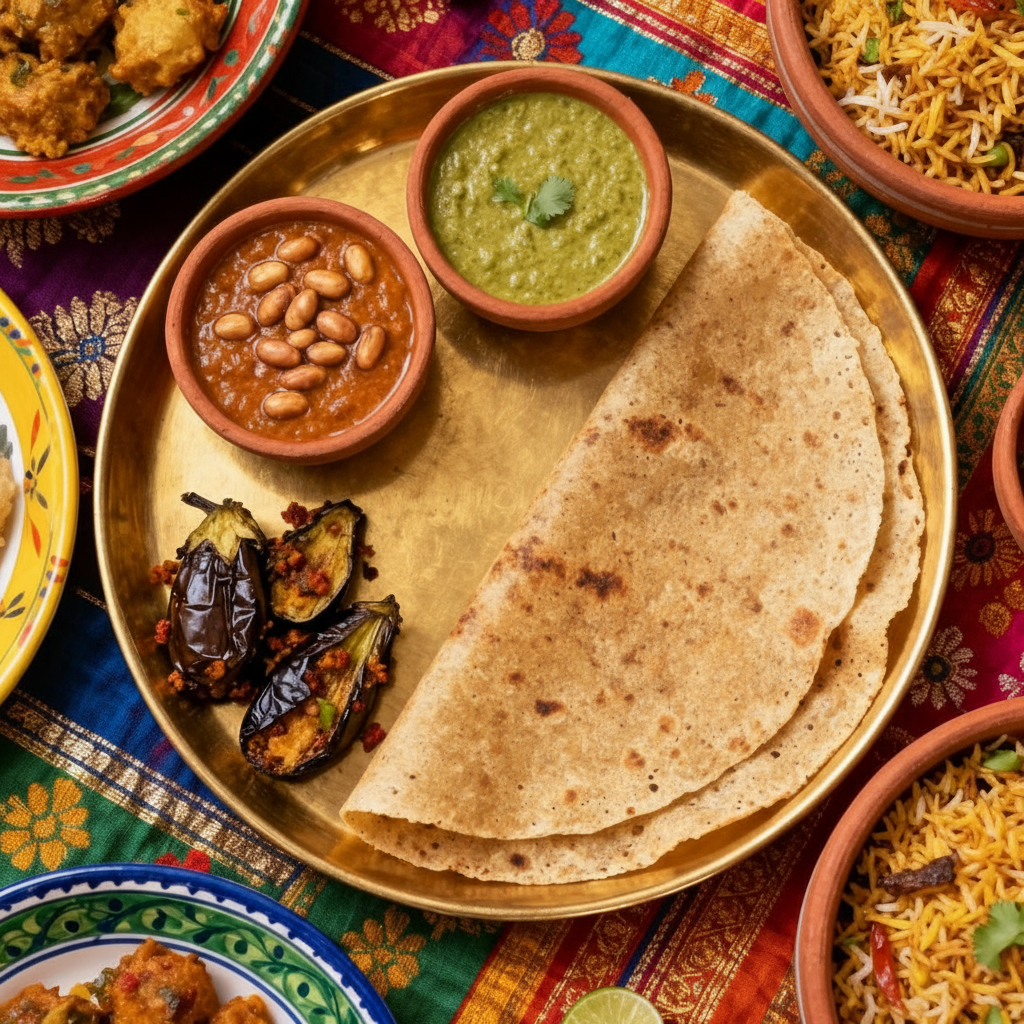Vijayapura’s Festival Tapestry: Celebrations That Weave Community

TL;DR: Vijayapura festivals bring together communities through vibrant celebrations that honor tradition, spirituality, and cultural heritage. From the nine nights of Navarathri to the colorful Gombe Habba doll displays, these festivals showcase the city’s pluralistic identity through food, rituals, and neighborhood gatherings. This article explores how these celebrations strengthen social bonds and preserve centuries-old customs in modern times.
In the historic streets of Vijayapura, where the echoes of Adil Shahi grandeur still resonate through time-worn bazaars, the rhythm of festivals marks the passage of seasons and strengthens the threads that bind diverse communities together. These celebrations—from the devotional fervor of Navarathri to the artistic displays of Gombe Habba—transform the city into a living canvas of cultural expression, where ancient traditions find new life through collective participation.
The Nine Nights of Divine Grace: Navarathri Celebrations
Every September-October, as the monsoon retreats and cooler evenings beckon, Vijayapura transforms into a spiritual amphitheater during the nine-day Navarathri festival. The celebration honors Goddess Durga in her nine manifestations, and the city’s neighborhoods come alive with pandals (temporary structures) housing elaborately decorated deities.
Community members across neighborhoods organize Navarathri celebrations, with preparations beginning weeks in advance. Families contribute in various ways—some donate funds, others help with decorations, and many volunteer their time for cooking prasadam (blessed food). These collaborative efforts strengthen community bonds throughout the year.
Vijayapura hosts numerous Navarathri celebrations across various neighborhoods, with the largest ones attracting thousands of devotees daily. The Kalyan Karnataka region, of which Vijayapura is a part, sees some of North Karnataka’s most elaborate Navarathri festivities.
The festival’s significance extends beyond religious observance. During these nine days, communities unite in devotion through shared meals, collective prayers, and cultural programs that create bonds lasting throughout the year.
Food plays a central role in these celebrations. Traditional dishes like jolada rotti (sorghum flatbread), enne badnekai (stuffed brinjal), and the sweet churumuri made from puffed rice are prepared in community kitchens, bringing people together through the preparation and sharing of traditional meals.
Gombe Habba: When Dolls Tell Stories
Coinciding with Navarathri, the tradition of Gombe Habba (doll festival) transforms homes across Vijayapura into miniature museums of mythology and creativity. This centuries-old Karnataka tradition sees families, particularly women and children, arranging elaborate displays of dolls depicting scenes from Hindu epics, historical events, and contemporary themes.
Families across various neighborhoods open their homes to visitors during the festival, showcasing collections that have been passed down through generations. The displays often feature themes related to mythology, history, and local culture, including depictions of Vijayapura’s monuments.
The social aspect of Gombe Habba is as important as its artistic merit. Neighbors visit each other’s displays, sharing stories behind the arrangements while children learn about mythology and history through visual storytelling. According to local tradition, odd numbers of steps (usually seven or nine) are used for the doll displays, each level representing different realms of existence.
Gombe Habba preserves cultural narratives in an accessible way. These displays make ancient stories vivid and memorable for children, serving as effective means of cultural transmission across generations.
Eid Celebrations: Harmony in Diversity
Vijayapura’s Islamic heritage, dating back to the Bahmani and Adil Shahi periods, finds its most vibrant expression during Eid ul-Fitr and Eid ul-Adha celebrations. The city’s numerous mosques, including the iconic Jama Masjid, become centers of community gathering and spiritual reflection.
Eid celebrations in Vijayapura are known for bringing communities together across religious boundaries. Traditional foods like sheer korma, kebabs, and biryani are shared among neighbors, fostering interfaith harmony.
The traditional Eid markets that spring up around the Bara Kaman area become melting pots of cultural exchange. Tailors work overtime creating new clothes, sweet shops prepare traditional delicacies, and the aroma of dum biryani wafts through the narrow lanes of the old city.
Vijayapura’s Eid celebrations attract visitors from neighboring districts, drawn by the city’s reputation for communal harmony and authentic traditional preparations. The festival showcases how religious celebrations can become vehicles for social cohesion.
Seasonal Celebrations: Harvest and Nature Festivals
The agricultural calendar deeply influences Vijayapura’s festival rhythm. Makar Sankranti in January marks the harvest of sugarcane and the preparation of traditional sweets like ellu-bella (sesame and jaggery mixture). Villages surrounding the city organize kite-flying competitions, with the sky becoming a canvas of colorful paper birds.
Sankranti celebrations include prayers for good crops, exchange of sweets with neighbors, and strengthening of community relationships. The festivals serve as reminders of the importance of community support in agricultural life.
Holi, the festival of colors, transforms Vijayapura’s streets into rainbow-hued celebration grounds. The traditional gulal (colored powder) mixed with locally-grown flowers creates a sensory explosion that brings strangers together in joyful chaos. Local preparation of natural colors using turmeric, indigo, and dried flowers has become an art form passed down through generations.
Festival Economics: Commerce and Community
Vijayapura festivals generate significant economic activity while strengthening social bonds. Local businesses—from flower vendors to sweet shops, textile merchants to decoration specialists—see increased sales during festival seasons, supporting local crafts and traditional skills.
Festival-related economic activity contributes significantly to Vijayapura’s local economy, supporting families whose livelihoods depend on seasonal celebrations. This includes temporary employment opportunities for many workers during peak festival periods.
Modern Adaptations: Technology Meets Tradition
Contemporary Vijayapura festivals embrace technology while preserving traditional essence. Digital communication tools coordinate neighborhood celebrations, digital payment systems facilitate donations, and social media platforms share festival highlights with diaspora communities worldwide.
Technology has made participation easier for those living away from Vijayapura. People can contribute to celebrations remotely, stay connected with preparations, and share their experiences with friends and family in other cities. The core traditions remain unchanged, but accessibility has improved.
Live streaming of major celebrations allows elderly family members and diaspora communities to participate virtually, ensuring that physical distance doesn’t break cultural connections. LED lights have replaced oil lamps in many decorations, but the spiritual significance remains untouched.
Challenges and Preservation Efforts
Despite their vibrancy, Vijayapura festivals face modern challenges. Urbanization has reduced community spaces, nuclear families have less time for elaborate preparations, and commercialization sometimes overshadows traditional values.
Cultural observers note that younger generations may continue festival rituals without fully understanding their significance and underlying stories. Preserving cultural knowledge alongside festivities requires conscious effort.
Local cultural organizations are responding with documentation projects, storytelling sessions during festivals, and educational programs in schools. Cultural associations organize workshops teaching traditional crafts, cooking methods, and festival significance to ensure knowledge transfer to future generations.
Festivals as Social Bridges
In an era of increasing social fragmentation, Vijayapura festivals serve as bridges connecting different communities, age groups, and economic classes. The shared preparation, celebration, and memories create social capital that extends beyond festival periods.
Festivals function as social institutions that create connections across diverse groups. In Vijayapura, communities participate in each other’s celebrations—families of different faiths contributing to various festivals, demonstrating cross-cultural participation that strengthens social cohesion.
Call to Action: When you visit Vijayapura, time your trip to coincide with a major festival. Participate respectfully in neighborhood celebrations, taste traditional foods, learn the stories behind the rituals, and contribute to the community spirit that makes these festivals special. Your respectful participation helps preserve traditions while creating cross-cultural understanding.
Conclusion: The Continuing Tapestry
As night falls over Vijayapura and festival lights illuminate ancient monuments, the city’s celebrations continue weaving their magic—binding communities, preserving traditions, and creating memories that last lifetimes. These festivals are not mere events on a calendar but living expressions of the city’s soul, where past and present dance together in joyous harmony.
From the sacred chants of Navarathri to the artistic displays of Gombe Habba, from the communal feasts of Eid to the colorful chaos of Holi, Vijayapura festivals embody the best of human celebration—bringing people together across boundaries of religion, caste, and class in shared moments of joy, reverence, and community spirit.
Sources
- Deccan Herald – Regional coverage of Vijayapura festivals and cultural significance of North Karnataka celebrations
- The Hindu – Reports on communal harmony during festivals and traditional celebration documentation




